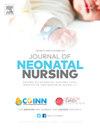The success rates of peripheral intravenous access placement in neonates using the difficult intravenous access (DIVA) score: A cross-sectional study in west java, Indonesia
Q2 Nursing
引用次数: 0
Abstract
Background
Peripheral intravenous (IV) access in neonates is a common yet challenging procedure due to anatomical and physiological factors. The Difficult Intravenous Access (DIVA) score is a predictive tool designed to assess the level of difficulty prior to IV access attempts. This cross-sectional study aimed to evaluate the success rate of peripheral IV access in neonates performed by clinical nurses, considering the DIVA score and other influencing factors.
Methods
A random sampling method was used to recruit participants. The DIVA score was assessed before each IV placement. Variables recorded included the clinical competence of nurses, DIVA score, training history, years of neonatal experience, needle insertion experience, and gestational age. Multivariate analyses were conducted with a significance level of 5 %.
Results
A total of 60 clinical nurses and 60 neonates were included in the study. Multivariate analysis revealed that the DIVA score (OR = 0.525, p = 0.028) was the only statistically significant factor associated with IV access success. Needle insertion experience showed a strong positive influence but was borderline significant (OR = 36.863, p = 0.060). Other variables, including clinical competence (OR = 0.064, p = 0.106), training history (OR = 4.133, p = 0.333), years of neonatal experience (OR = 0.972, p = 0.732), and gestational age (OR = 1.020, p = 0.873) did not show significant associations with success.
Conclusion
The DIVA score was the only variable significantly associated with the success of peripheral IV access in neonates, while needle insertion experience showed a borderline positive effect. Other factors, such as clinical competence, training history, years of neonatal experience, and gestational age, were not significantly related to success in this study. Further investigation with larger sample sizes may be warranted to explore these associations further.
使用静脉注射困难(DIVA)评分的新生儿外周静脉通路放置成功率:印度尼西亚西爪哇的一项横断面研究
背景:由于解剖学和生理因素,新生儿外周静脉(IV)通路是一种常见但具有挑战性的手术。静脉输注困难(DIVA)评分是一种预测工具,用于评估静脉输注尝试前的困难程度。本横断面研究旨在评估临床护士对新生儿外周静脉通路的成功率,并考虑DIVA评分等影响因素。方法采用随机抽样方法进行调查。每次静脉滴注前评估DIVA评分。记录的变量包括护士的临床能力、DIVA评分、培训史、新生儿经验年数、针头插入经验和胎龄。进行多变量分析,显著性水平为5%。结果共纳入60名临床护士和60名新生儿。多因素分析显示,DIVA评分(OR = 0.525, p = 0.028)是影响静脉输注成功的唯一有统计学意义的因素。针刺经历对患者有明显的积极影响,但差异无统计学意义(OR = 36.863, p = 0.060)。其他变量包括临床能力(OR = 0.064, p = 0.106)、训练史(OR = 4.133, p = 0.333)、新生儿经验年数(OR = 0.972, p = 0.732)和胎龄(OR = 1.020, p = 0.873)与成功无显著相关性。结论DIVA评分是影响新生儿外周静脉通路成功与否的唯一变量,而插针经验对新生儿外周静脉通路的成功与否具有边缘性的积极作用。其他因素,如临床能力、训练史、新生儿经验年数和胎龄,与本研究的成功无显著相关。更大样本量的进一步调查可能有必要进一步探索这些关联。
本文章由计算机程序翻译,如有差异,请以英文原文为准。
求助全文
约1分钟内获得全文
求助全文
来源期刊

Journal of Neonatal Nursing
Nursing-Pediatrics
CiteScore
2.00
自引率
0.00%
发文量
143
期刊介绍:
Aims & Scope: This is the practical, bimonthly, research-based journal for all professionals concerned with the care of neonates and their families, both in hospital and the community. It aims to support the development of the essential practice, management, education and health promotion skills required by these professionals. The JNN will provide a forum for the exchange of ideas and information between the range of professionals working in this field; promote cooperation between these professionals; facilitate partnership care with families; provide information and informed opinion; promote innovation and change in the care of neonates and their families; and provide an education resource for this important rapidly developing field.
 求助内容:
求助内容: 应助结果提醒方式:
应助结果提醒方式:


